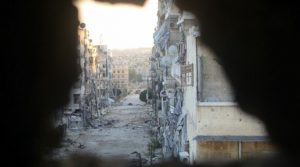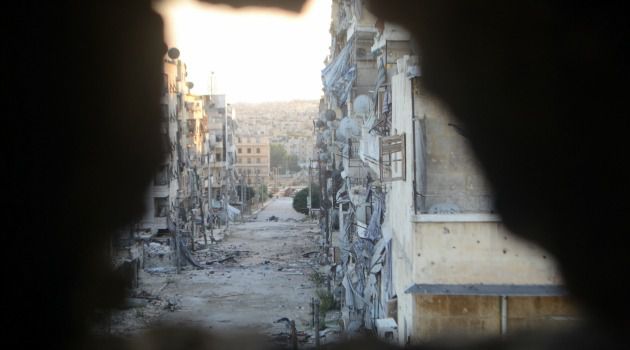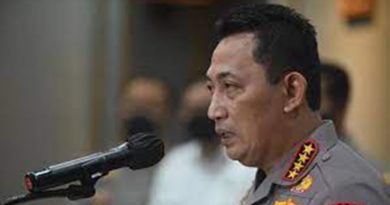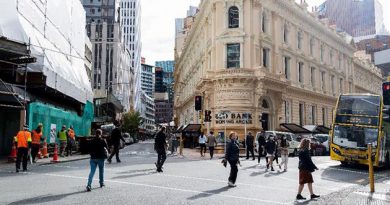US-led Strike Raises Questions About What’s Next in Syria Strategy

After the airstrikes late last week, mixed messages from the administration have meant it’s not entirely clear, particularly how the White House will react to any further chemical weapons attacks, and when and how the US will exit Syria, where it currently has about 2,000 troops.
Washington, along with London and Paris, launched the airstrikes in the wee hours of Syria’s Saturday morning in response for an April 7 attack on the rebel stronghold of Douma that killed about 75 people, including children, and left another 500 in need of treatment for symptoms consistent with chemical weapons exposure.
The strikes came not long after President Donald Trump signaled he wanted to end US involvement in Syria. But when he announced the military action to punish the suspected use of sarin gas and chlorine on Friday night, Trump said the US would be undertaking a sustained response to stop the use of chemical weapons. US officials stressed after the attack that the White House strategy had never changed.
“The US mission has not changed: The President has been clear that he wants US forces to come home as quickly as possible,” White House spokeswoman Sarah Sanders said. “We are determined to completely crush ISIS and create the conditions that will prevent its return. In addition we expect our regional allies and partners to take greater responsibility both militarily and financially for securing the region.”
French President Emmanuel Macron reaffirmed Trump’s shift when he told French media on Sunday that “10 days ago, President Trump said the USA’s will is to disengage from Syria. We convinced him that it was necessary to stay.”
Macron was reacting to comments Trump had made about Syria on April 3, when he said, “I want to get out. I want to bring our troops back home. It’s time.”
“Established US policy”
Questions about Trump’s mixed messages led the US to insist the parameters for US involvement in Syria haven’t changed and that the country remains focused on defeating the terrorist group ISIS.
Eric Pahon, a Pentagon spokesman, reaffirmed that the “strikes do not signal a departure from established US policy.”
“That we struck targets which enable the Syrian regime’s chemical weapons program is separate and distinct” from the mission to defeat ISIS, Pahon said.
But the President’s seeming shift raised questions about what exactly the US will do in future, particularly about any gas attacks that might use chlorine, a common household chemical that has been deployed repeatedly in Syria, officials say.
“We have a large volume of clear and compelling information, both of chemical weapons use and of Assad’s culpability in this attack,” a senior administration official told reporters April 14. “The information we have points to the use of both chlorine and sarin, both of which are chemical weapons, as used in this attack and beyond.”
The objective, the official said, was to stop Syrian leader Bashar al-Assad from using chemical weapons. “As the President made clear, if this step does not succeed, we will be prepared to act again. We don’t want to be construed as taking steps beyond the context of CW use,” the official said, referring to chemical weapons.
Chances are it could happen again. A second administration official noted that “we have seen a consistent pattern of the Syrian regime resorting to the use of chemical weapons.” The US ambassador to the UN, Nikki Haley, told the Security Council on Friday that the US assesses that Assad “has used chemical weapons in the Syrian war at least 50 times.”
Nongovernmental groups and watchdogs have said that many of these attacks have deployed the chlorine gas that US officials say was part of the chemical cocktail dropped on Douma.
The attack raises questions about whether the use of chlorine has become a new “red line,” warranting a response every time it’s used. US defense officials say this could become a key policy issue for the President to decide case by case.
Haley was asked Sunday on CBS’ “Face the Nation” what warranted a response to the April 7 attack when the Syrian regime had used chemical weapons dozens of times in the past.
“Well, I think that obviously this was cumulative,” Haley said. “Assad had been using chemical weapons multiple times” in defiance of UN resolutions, she said. “We felt like we had gone through every diplomatic measure of talking that we could and it was time for action.”
When asked about Trump’s comment that he’d like to bring troops home from Syria, Haley laid out criteria that could keep them there for quite a while, including offending chemical usage “anywhere,” defeating ISIS and stopping Iran’s influence in the region.
“What we are saying is at some point we want to see our military come home,” Haley said. Listing the administration’s goals, she said, “all of these things are being done in the name of bringing our military home.”
James Carafano, a vice president at the conservative Heritage Foundation, said the administration’s goals and the exit strategy don’t have to be complicated or long-term. The administration has already scored successes in Syria, Carafano said, and given the state of the Middle East, the US doesn’t have to aim to transform Syria into Switzerland.
He pointed out that while refugee flows into neighboring Middle Eastern countries and Europe have ebbed, it remains crucial to ensure that Jordan and Iraq aren’t destabilized by the conflict, by Iran or by groups like ISIS and al Qaeda.
“We don’t have to solve Syria, we don’t have to get rid of Assad, we don’t have to convert it into the land of milk and honey,” Carafano said. “What we have to do, generally speaking, is bring a measure of peace and stability to Syria by pushing back against Iran and the threat of ISIS and al Qaeda destabilizing regimes. …
“We define success if we continue to defend our interests. If there aren’t millions of interests, that’s success.”
Courtesy : CNN
Photo : The Forward
[social_warfare buttons=”Facebook,Pinterest,LinkedIn,Twitter,Total”]



